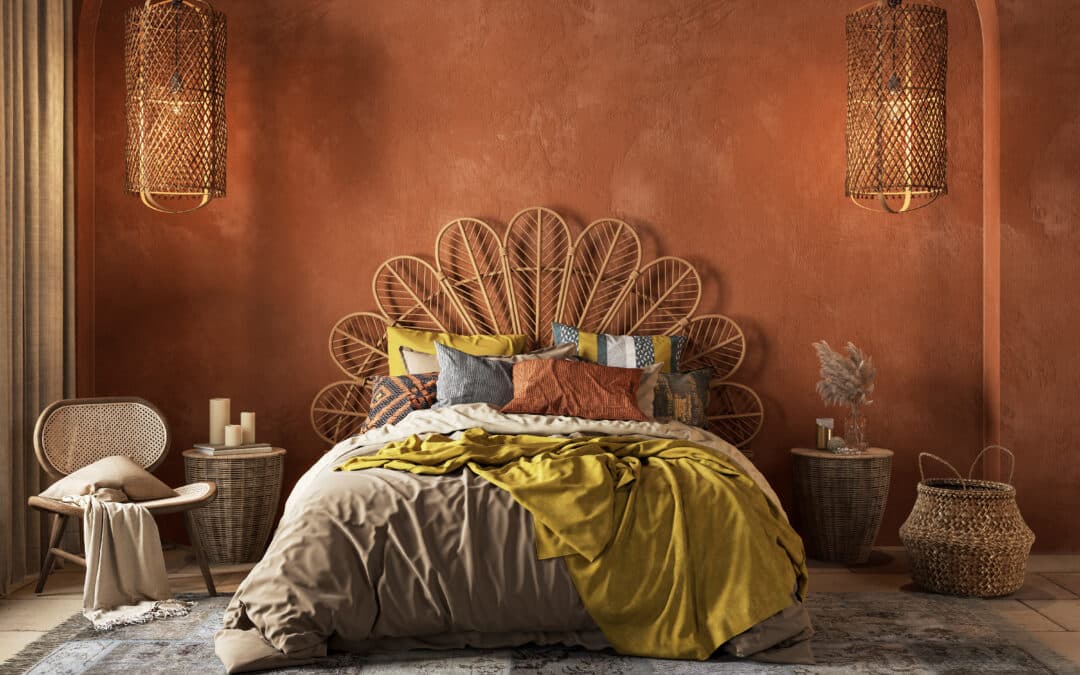On February I wrote about 3D printed houses and how they can help to address the affordable housing crisis while also being unique and beautiful works of art. But the technology has widespread applications beyond houses. Already today there are companies creating stylish furnishings that are 3D printed. And many of these objects can be printed from sustainable materials like hemp, mushrooms, coffee, or recycled materials. What are the implications for home design once these technologies go mainstream?
There are reasons why most houses are rectangular. First is because the raw materials (lumber and bricks) are rectangular. Second is that the items that go in the spaces (couches, tables, cabinets, appliances, windows) are usually rectangular. Having curved walls and straight furniture makes for awkward and wasted spaces. But as houses move toward 3D printing and it becomes just as easy and inexpensive to create beautiful curves for the walls, we can follow—literally—the same mold for furniture. Imagine a couch or bed headboard that is curved exactly the same as the wall so that it fits perfectly. You might even design them to interlock like jigsaw puzzle pieces to increase stability. The 3D printed furniture would be much less expensive than traditional furniture. And it could be printed on demand in a few hours. You can create furniture to follow any historical style you want. You could scan and create a 3D model of an antique for reproduction via 3D printing. Or you can create very modern looking furniture that fits human contours or explores new ideas for how furniture should work or fit.
Printing furniture to match your house configuration is the ultimate in customization. Have a bow window? Print a curved window seat with exactly the same curve as the window. Have an S-curved wall? Maybe an S-curved bookcase can snuggle up to it. You could print curved kitchen cabinets to line your curved kitchen while providing rectangular spaces for your appliances.
Since each 3D print is programmed into a computer it would be possible to customize furniture to your particular needs or size. I am 6’8” (203 cm) tall and always have trouble with chairs, couches, tables, and desks. Chairs aren’t usually deep enough to support my knees and couches are so low that my knees are up around my ears when I sit down. And desks? I am the only person I know who wears out his pants on top of the thigh because the material rubs the bottom of the desktop. A 3D printed solution could fit me perfectly without having to stock a myriad of sizes at a furniture store. Beyond fitting custom sizes, it would be cheap and easy to make custom applications so you can arrange your office or bedroom any way you want.
Other features of 3D printed furniture make it a good choice for home design. First is that it can be made from sustainable materials. To make wood furniture you have to have planted the tree decades ago and you must make sure you continue to plant as you harvest. 3D furniture made from hemp can be grown in a season and can be grown again next season. Materials may also be recycled to make furniture. A whole industry is growing to use a wide variety of recycled material in 3D printing including mushrooms and coffee. (As much coffee as I drink, I could recycle a whole bedroom suite). Some of these materials create interesting textures but I am told any scents go away during the process.
3D printed furniture is often much lighter than wood furniture and, depending on the material and extrusion process, may be sturdier. But we will need lots of research and testing to determine best practices for creating well made, sturdy furniture that can stand up to a beating, repeated moves, and the abuse that furniture often takes. But there are 30-pound full size couches and chairs that weigh a couple of kilograms.
One of the primary design benefits of 3D printing is the intricacy that can be created with the same effort as a blocky traditional design. To pay for intricate designs now requires a small fortune. In the very near future, they will be just as easy and actually require less material than simpler designs.
The technology is here now. What needs to happen to bring 3D printed furniture to the forefront is some research on material properties so we can ensure the durability of the furniture and predict how much weight it can bear. In addition, we need a wide catalog of printing designs that have been tested and proven and can be printed on demand. And lastly, we need software that can adapt designs to different sizes and shapes to provide true customization. Fortunately, companies such as Empower Unity are building the teams needed to create these products and make them available everywhere.
Between home printing and furniture printing, your entire household can be created as a custom design that fits you and your lifestyle perfectly at a fraction of the cost of current households that have far less customization. Within the next three years this technology will take the real estate world by storm.
Steve Streetman is a real estate consultant specializing in deal structuring and the use of cryptocurrency. Look for his book “Cryptocurrency and Real Estate: how to profit as Bitcoin and Blockchain transform real estate investing” available now on Amazon in paperback and ebook formats.
























0 Comments